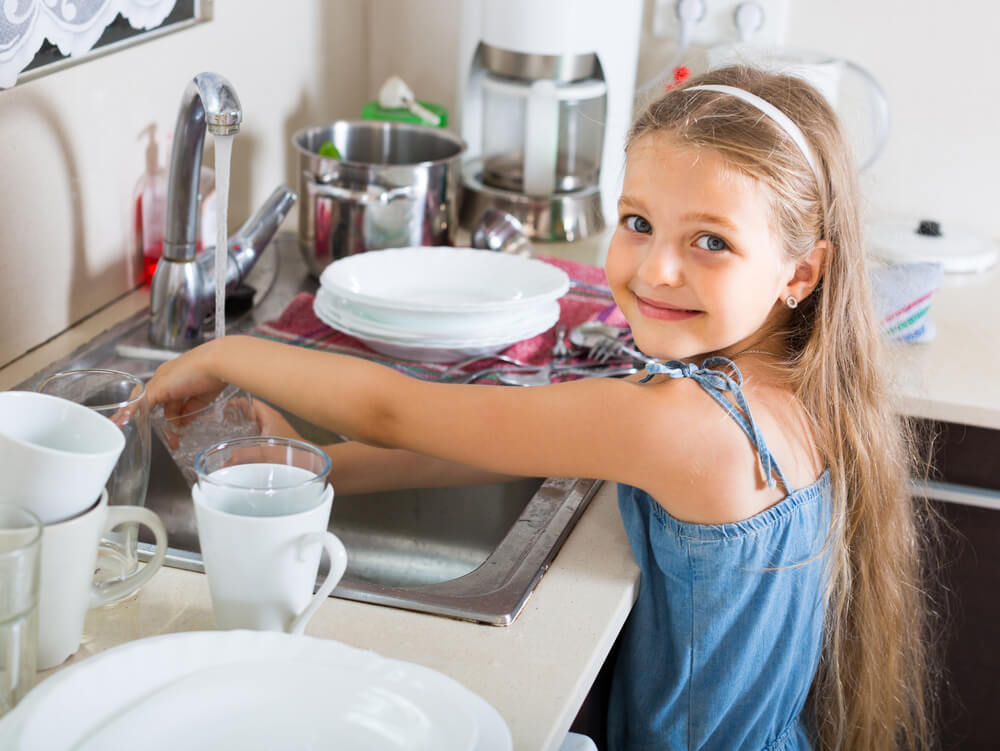When you hear the word “self-care” you probably picture a face mask and a bubble bath. However, self-care includes a lot more than that, especially in Montessori settings.
In Montessori methods, self-care is any activity that will help a child become independent in taking care of their bodies. Montessori methods teach self-care through learning stations where kids brush their hair, button their clothes or wash their own hands.
So what exactly are the Montessori methods? How can everyone use them to teach their children self-care and independence? Here is everything you need to know about Montessori and how it pertains to self-care.
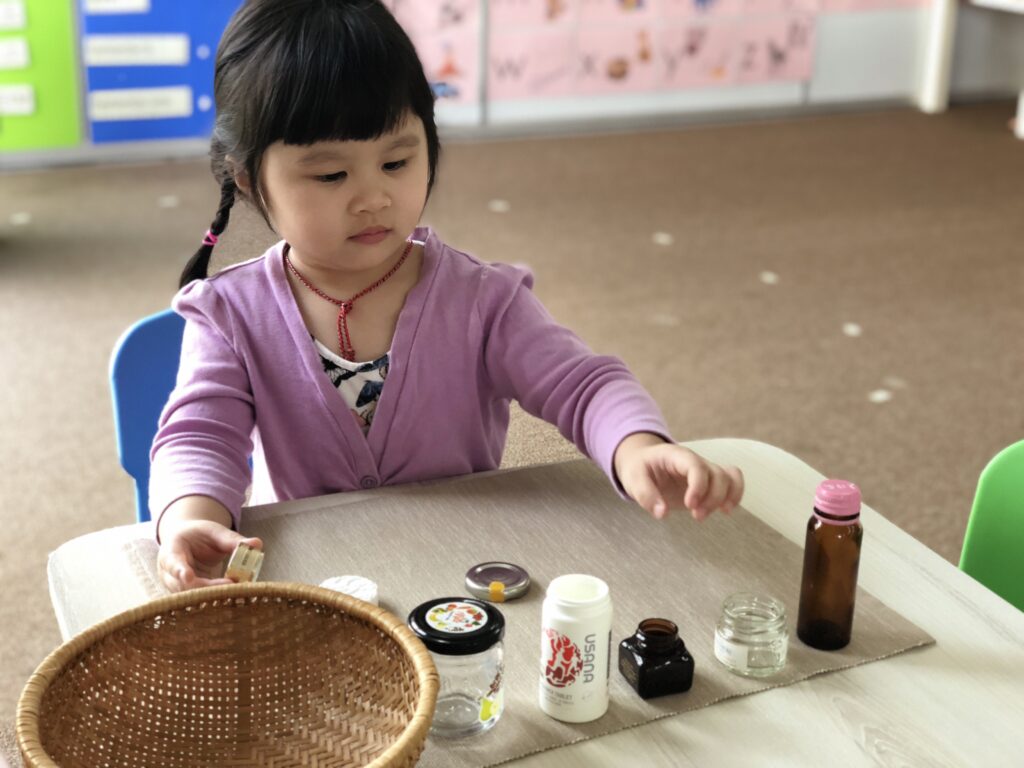
The Montessori Method
The Montessori Method, developed by Maria Montessori, is a learning method that established independence and hands-on learning for children. In Montessori preschools, children can interact with their environment independently, without a lot of direct teacher involvement.
Montessori schools and methods also focus on teaching children valuable skillsets that can be used in the real world and outside of the school setting. These children are often taught practical life activities, such as how to clean, cook and help themselves. They play independently on their own mats and are expected to clean up after themselves.
Montessori also believes in toys that help children learn. Wooden toys and toys that are made out of natural materials are emphasized in the Montessori teachings. All furniture is child-sized and toys are low to the ground, making everything easily accessible and “on-limits” for children.
“The hand is the instrument of intelligence. The child needs to manipulate objects and to gain experience by touching and handling. “Maria Montessori
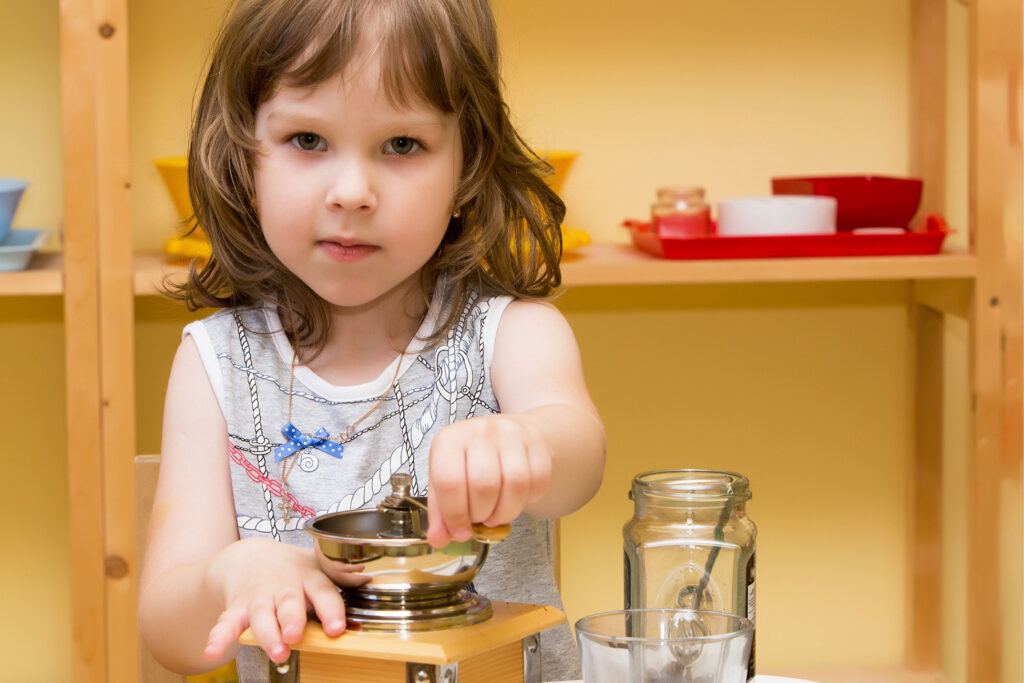
Self-Care
Independence means knowing how to take care of ourselves. This includes knowing how to brush our teeth, wash our hands, and put on our clothes. The Montessori method believes that children need to learn how to do these things for themselves, instead of having a teacher or parent do it for them.
Self-care and independence help children develop a sense of accomplishment and feel competent in their skillset.
Dressing Frames:
A classroom tool/toy utilized in Montessori is a dressing frame. A dressing frame is a wooden frame equipped with clothing items such as buttons, shoelaces, buckles, and ribbons. Dressing frames, like these on our website, allow children to develop their fine motor skills while learning how to use clothing items.
Food and snacks:
In Montessori classrooms, there is not a designated snack time for children. Instead, snacks are available and within reach of children, so they can access them and eat whenever they are hungry. This is a form of self-care that teaches children to eat when they are hungry, and it teaches them how to independently get their own food.
Lessons:
Montessori teachers are not directly involved in a lot of instruction in the classroom. However, they provide lessons on skills, such as nose-blowing, putting on winter clothes, and hair brushing.
The majority of the lessons taught in a Montessori setting are not taught through direct instruction, but rather are discovered by the children on their own. These lessons are the lessons on independence and valuable skillsets that are discovered through direct exploration.
“Any child who is self-sufficient, who can tie his shoes, dress or undress himself, reflects in his joy and sense of achievement the image of human dignity, which is derived from a sense of independence.”Maria Montessori
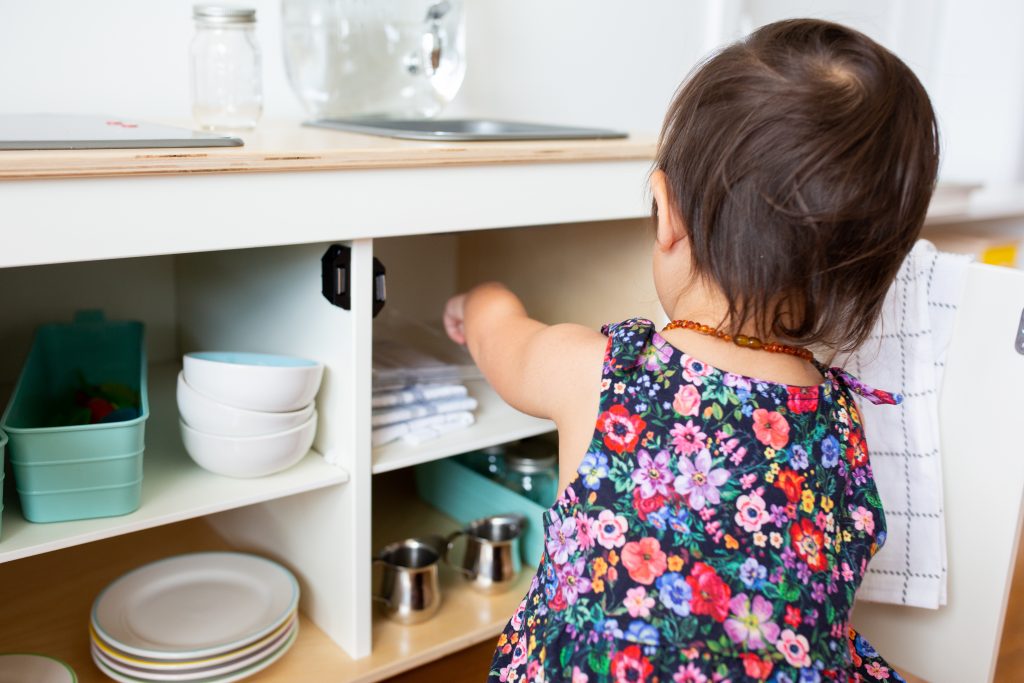
Montessori Self Care Station
A method to help children develop self-care on their own is to build a Montessori-style self-care station. These stations, found throughout Montessori classrooms, can be constructed and utilized in the home as well. There are a few different kinds of self-care stations.
Self Care Dressing Station:
A dressing station in the Montessori style would contain low-hanging clothing that allows children to pick out their outfits. It would also provide baskets of other clothing items such as socks, shoes, and underwear. The clothing station should also have a hamper for the children to place their dirty clothes in.
Self-care bathroom station:
A self-care station in the bathroom is where children can access and perform bathroom tasks on their own. These self-care stations will likely have water and soap for children to wash their hands. Tissues, for children to blow their noses. Hair and toothbrushes for children to brush their hair and teeth. Towels for them to dry their hands, and a potty training toilet for the child to use independently.
Self-care food station:
Another possible self-care station is a food station. This station can range anywhere from having a drink and a few snacks, to having components that need to be assembled. With a food station, children can regulate how much they want to eat and when they want to eat. We have a full article on creating a Montessori kitchen with complete information.
Although self-care stations look vastly different, they should all have these components:
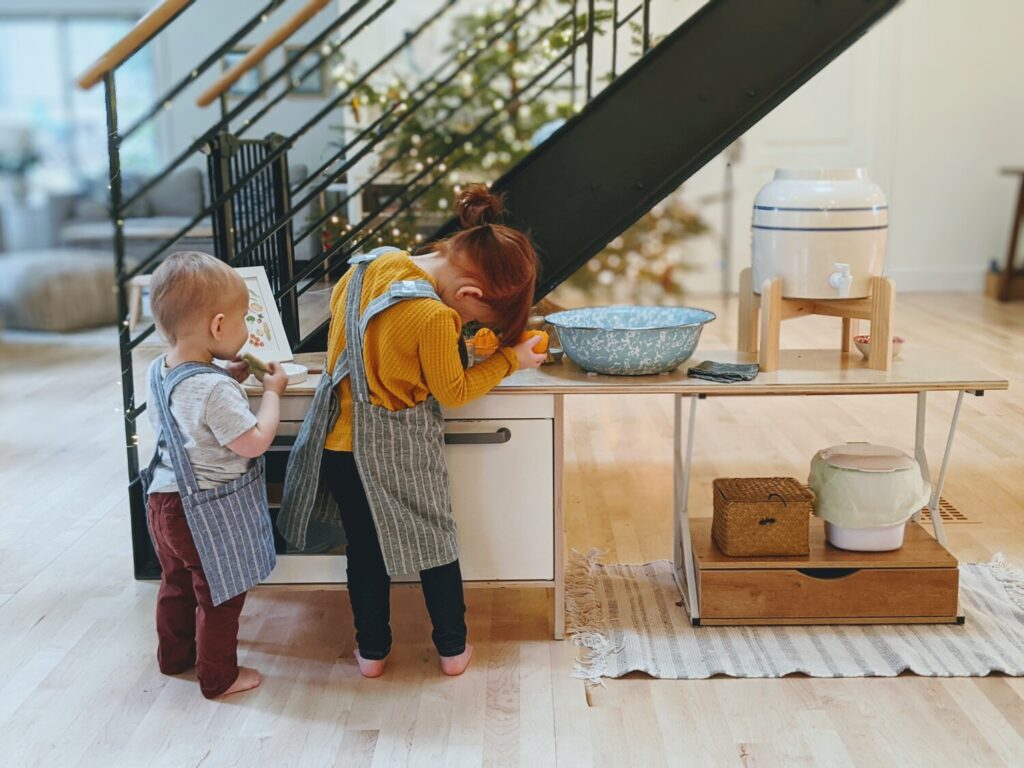
- Accessibility:
In the Montessori classroom, everything is accessible to the children. They can access toys, snacks, and classroom tools. This accessibility extends to self-care items. When putting together a self-care item in the home, you should make sure that everything is within reach for your child to access without help.
If there is something that you cannot move or lower to accommodate the children’s height, you should provide a stool for the child to stand on.
- Flexibility
Self-care stations may start with only a few items, but as your child grows and expands their skillset, their self-care station should expand to accompany that. The care stations should always reflect the skill set of the child. If the station matches the skill set, it will help establish growth and independence.
These stations should also cater to the child’s interests. If the child shows more interest in dressing themselves than using the sink in the bathroom, it will be more valuable to create a self-care station centered around dressing and clothing.
- Safety
The tools and toys available in the self-care stations need to be non-toxic and safe for children to use. In the Montessori method, most toys and tools are made out of wood and natural material. True to the Montessori method, self-care stations should contain similar materials.
